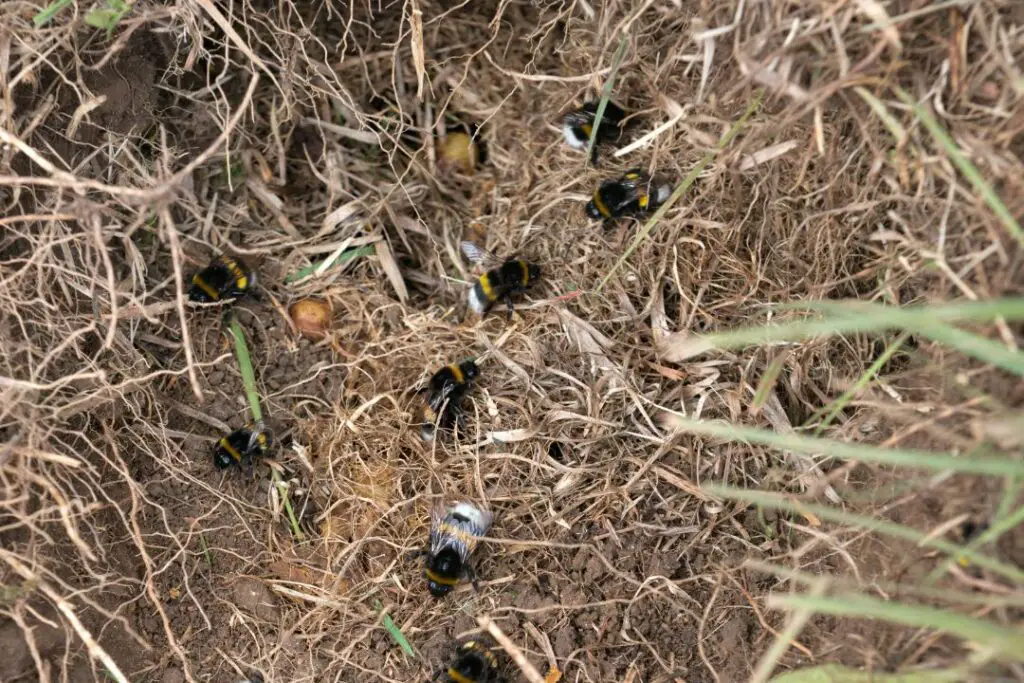Believe it or not, up to 70% of bee species live underground!
While most of us think of nests hanging in trees, thousands of species of bees live a completely different life.
Let’s meet some species of bees that make subterranean burrows their home and learn more about their fascinating lives.
Miner Bees
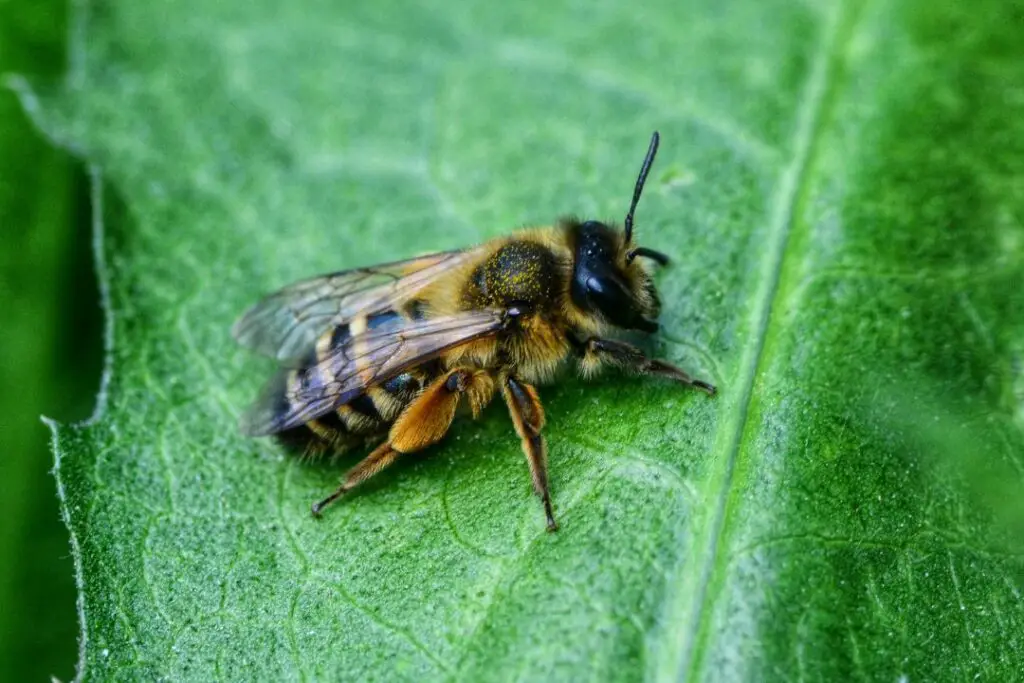
As its name suggests, the mining bee is quite the adept little digger.
These bees comprise one of the four types of solitary bees alongside the mason, leafcutter, and carpenter.
They create their nests by excavating tunnels into the ground.
It’s easy to spot a mining bee nest because of the piles of bare soil left around the entrance, just like in our example below.
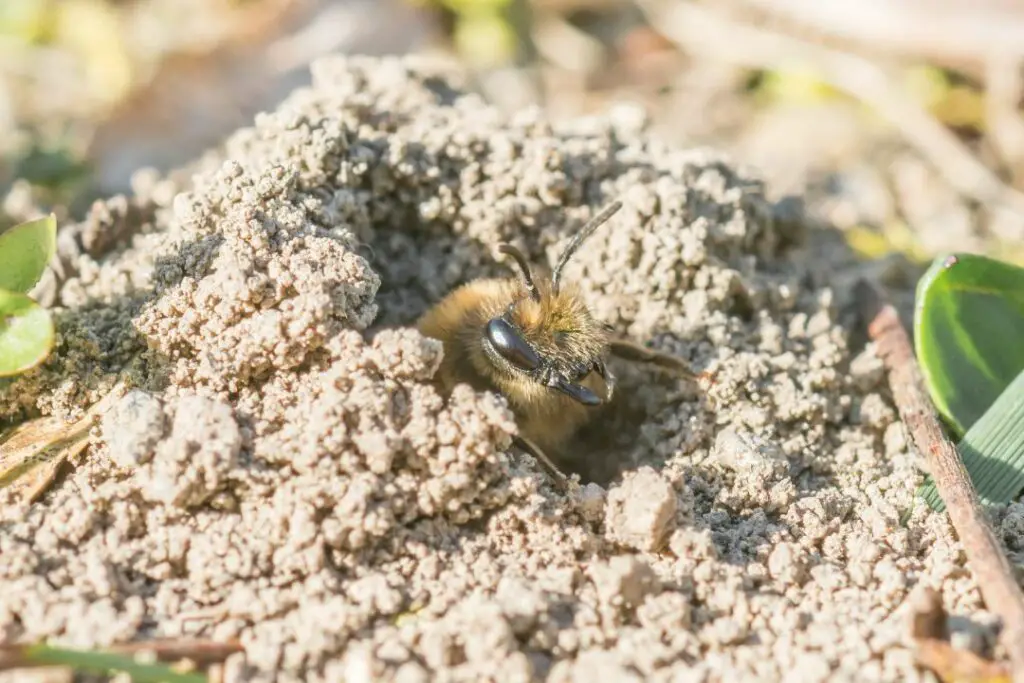
Despite being solitary in nature, they will still make nests near other mining bees.
This tends to be when people notice miner bees, with some none too happy with what they see as damage to their lawn.
But these fascinating types of bees are essential pollinators and have been proven to help with drainage after floods, amongst many other benefits.
Leafcutter Bees
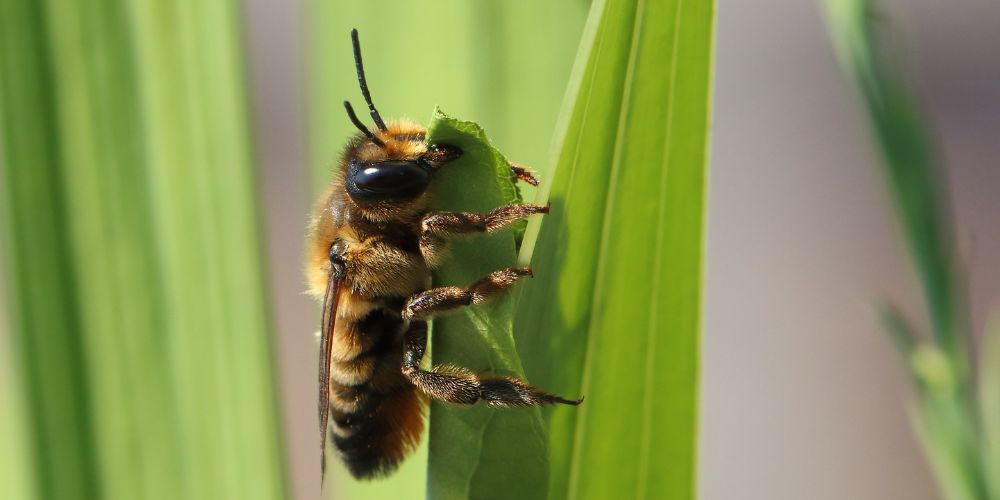
Leafcutter bees get their name from the distinctive chunks they take from leaves nearby to the nest.
These captivating insects are well known for making symmetrical patterns as they carefully collect the necessary resources.
They nest in pre-made tubes like plant stems or by digging into dead wood or loose sandy soil.
Female bees use the bits of the leaf to line the inside of their nest, ready for rearing young.
Each piece of leaf is carefully interwoven to create a structure that looks very similar to a thimble.
Once complete, the bee will collect nectar and pollen before depositing it back into her carefully constructed receptacle.
Once complete, a single egg will be laid on the waiting food and capped with more pieces of leaf.
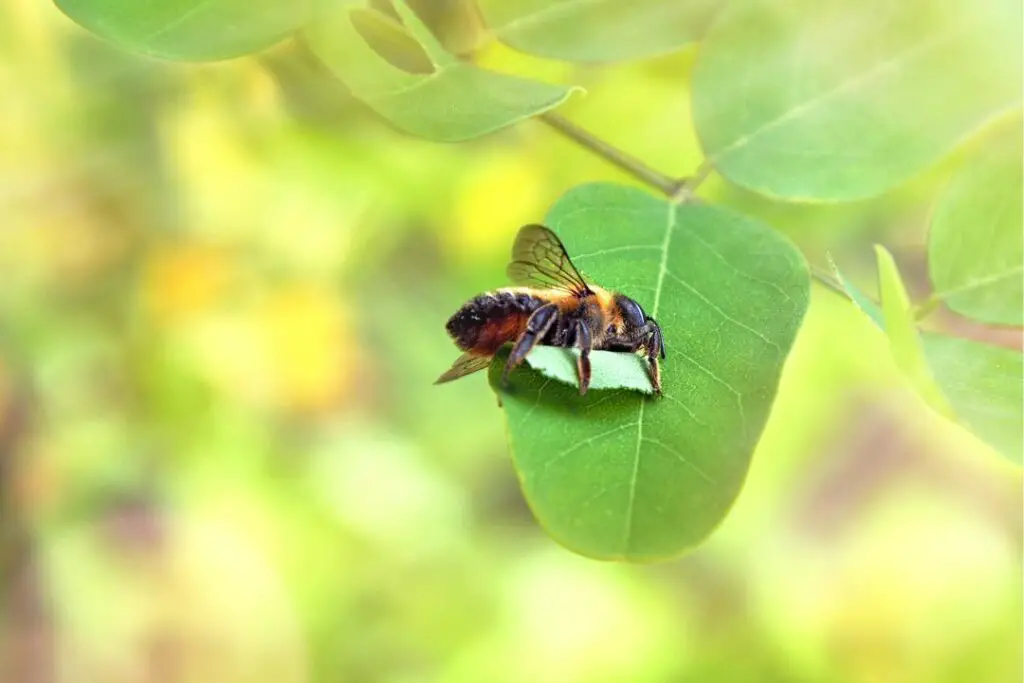
The bee will repeat this process up to 20 times, placing male larvae closer to the nest’s entrance.
As winter sets in, the female tending to the nest will expire.
The young larvae will eventually hatch before consuming ample food stores in their leaf cocoons.
As spring arrives, the males will emerge first before going on to mate with late-arriving females.
Bumblebees
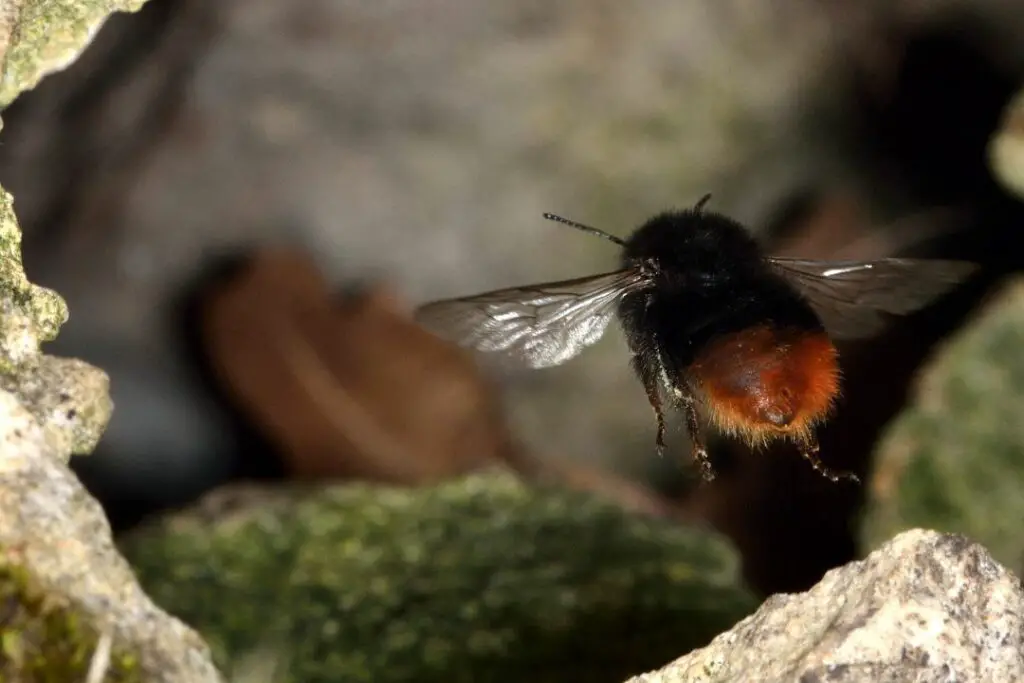
Unlike the first two bees on our list, bumblebees live in colonies with a queen bee.
But they’re still ground bees, relying on underground burrows to avoid natural predators.
They’re not quite as adept at groundwork, relying on vacated rodent burrows and pre-existing holes in the ground.
Unlike the honey bee, the bumblebee queen doesn’t have any scout bees to rely on, so it’s up to her to find a suitable nest site.
Once she’s happy to lay eggs, she’ll raise a mixture of male and female larvae to ensure the species’ survival.
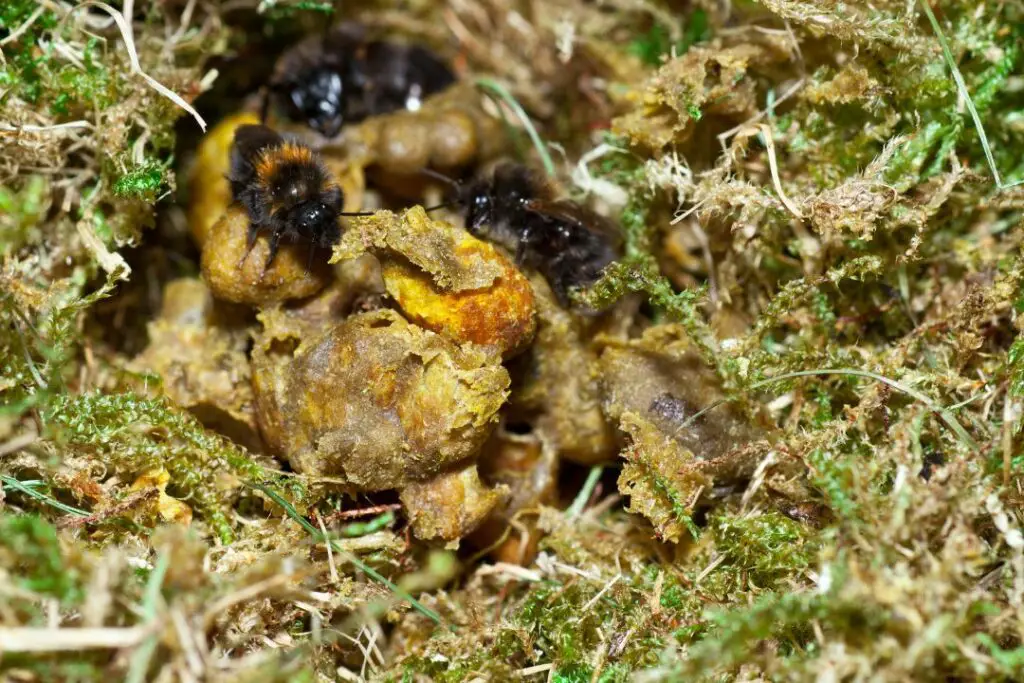
Nests tend to last 2-3 months to late summer when new queens leave to start the cycle again.
But to do this, they must survive the harsh reality of the coming months.
To do this, the queens set about gorging themselves with pollen and nectar before taking ground cover in the form of small burrows.
She’ll wait out the cold winter before starting her nest in early spring.
Sweat Bees
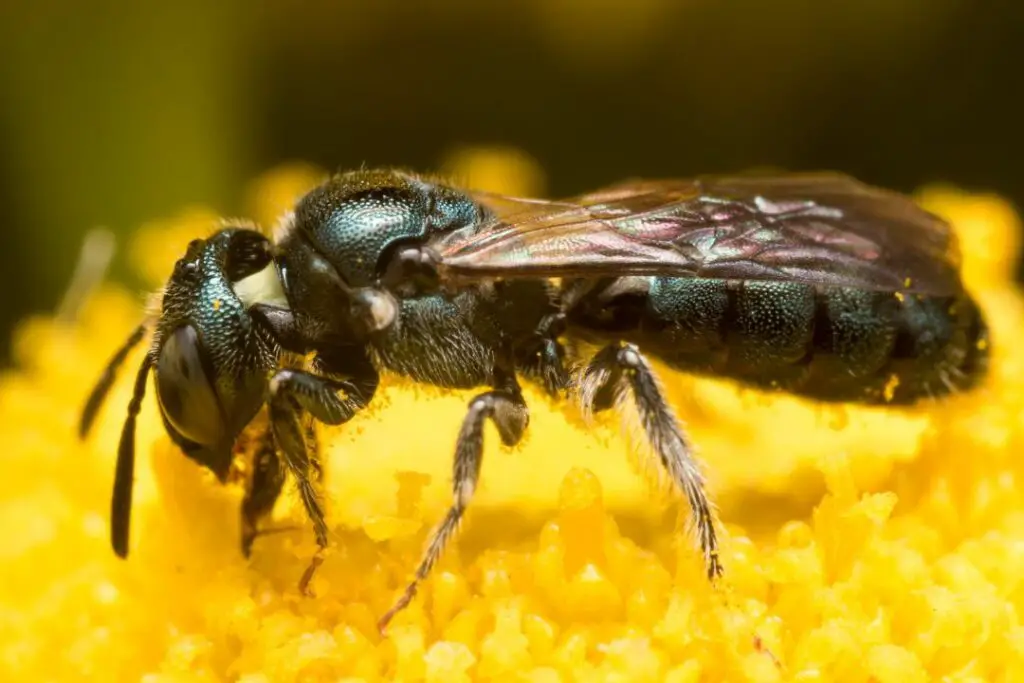
Sweat bees are similar in appearance to small honeybees, but as their name suggests, they have developed some slightly odd habits.
Sweat bees, Latin name Halictidae, make up the second largest family of bees, and they are probably best known for drinking the sweat of various animals (humans included) to collect the precious electrolytes within.
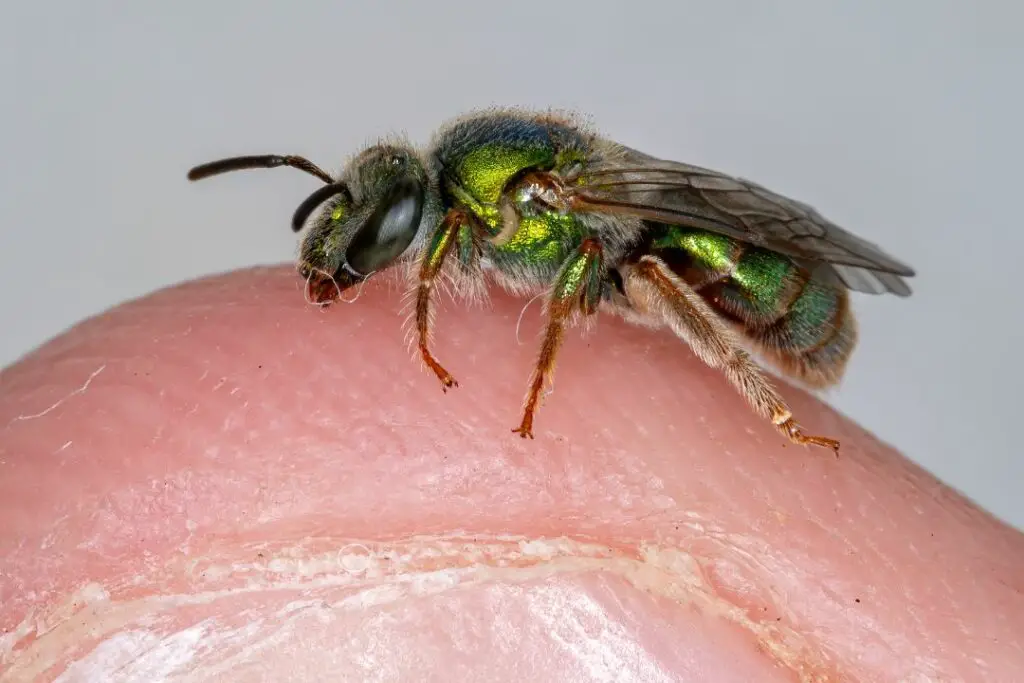
These native bees are prolific ground nesters using loose clay soil and eroding riverbanks that make excavating easy.
Once situated, they collect nectar and pollen to form large stores in the nest. Each ball of nectar and pollen will allow young larvae to develop into a fully formed sweat bee.
When the stores are full, a single egg will be laid on each store before being capped.
These fascinating little bees often have a metallic look, and some species even sport shades of green and purple which is unusual amongst bees.
Vulture Bees
Vulture or carrion bees are a bit of an anomaly regarding how they feed.
As the name suggests, they have added meat to the menu, consisting of a diet of dead animals and carrion.
These extraordinary kinds of bees live in South America, only discovered around 40 years ago; they are still being studied so we can better understand their lifecycle and habits.
Sadly I couldn’t find a good image of a meat bee, but you can search it online to find some great pictures of them in action stripping meat to the bone.
Like many bees, they nest underground or in hollow trees that protect them from unwanted predators.
*Interesting fact – Vulture bees still create a form of honey known as ‘meat honey’; it’s much darker than regular honey and is reported to have a sickly sweet taste derived from the extra protein content.
Frequently Asked Questions
Now we’ve met some of the most prolific ground nesters, let’s look at some common questions we hear about these subterranean insects.
Do carpenter bees ever live in the ground?
No, carpenter bees use their powerful mandibles to carve their nests into pieces of wood. Head over to our page on carpenter bees to learn more.
Which bees nest in the ground?
Up to 70% of bee species live underground. Some species that make subterranean burrows their home include miner bees, leafcutter bees, bumblebees, sweat bees, and vulture bees.
How do miner bees create their nests?
Miner Bees create their nests by excavating tunnels into the ground. It’s easy to identify a mining bee nest due to the piles of bare soil left around the entrance.

